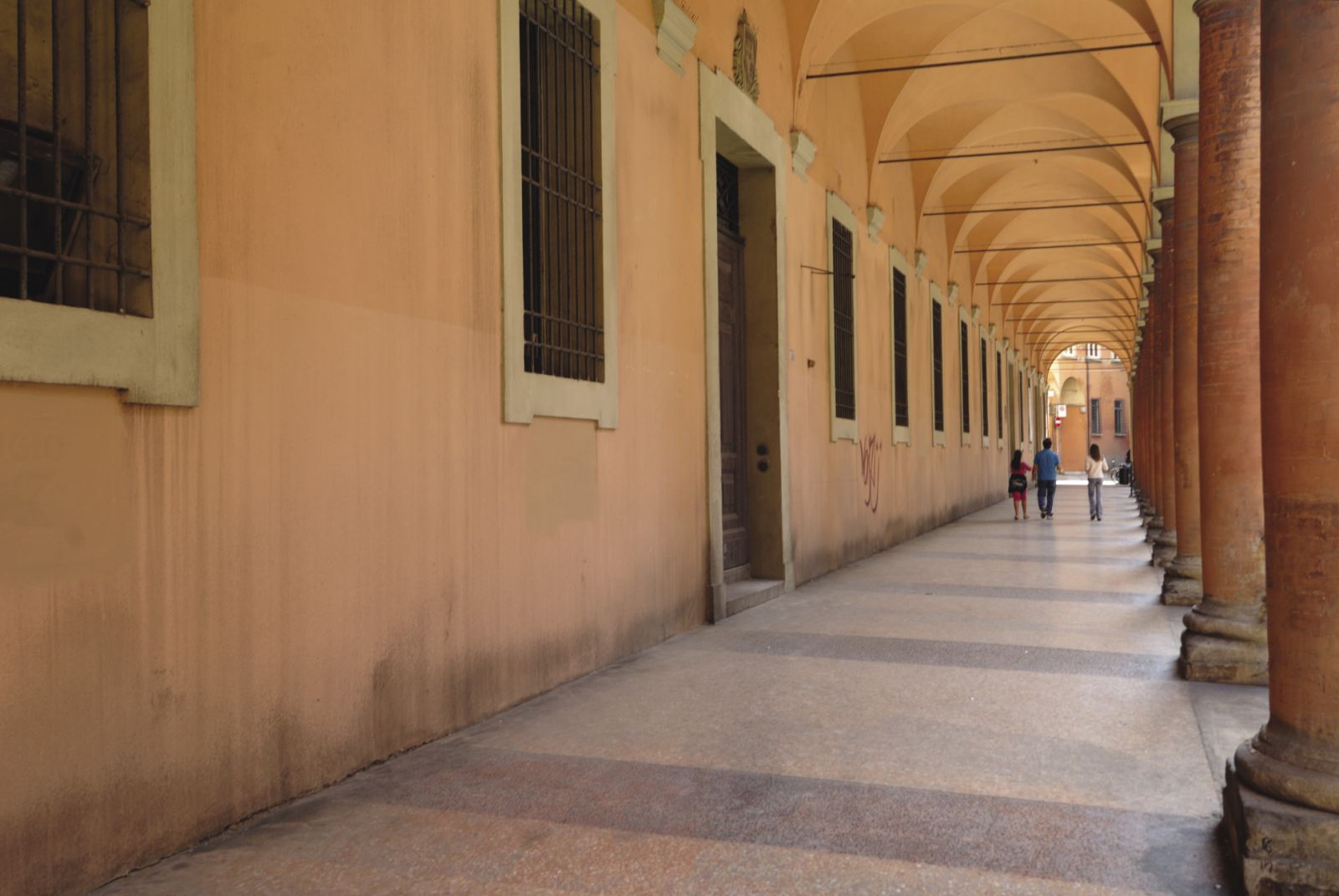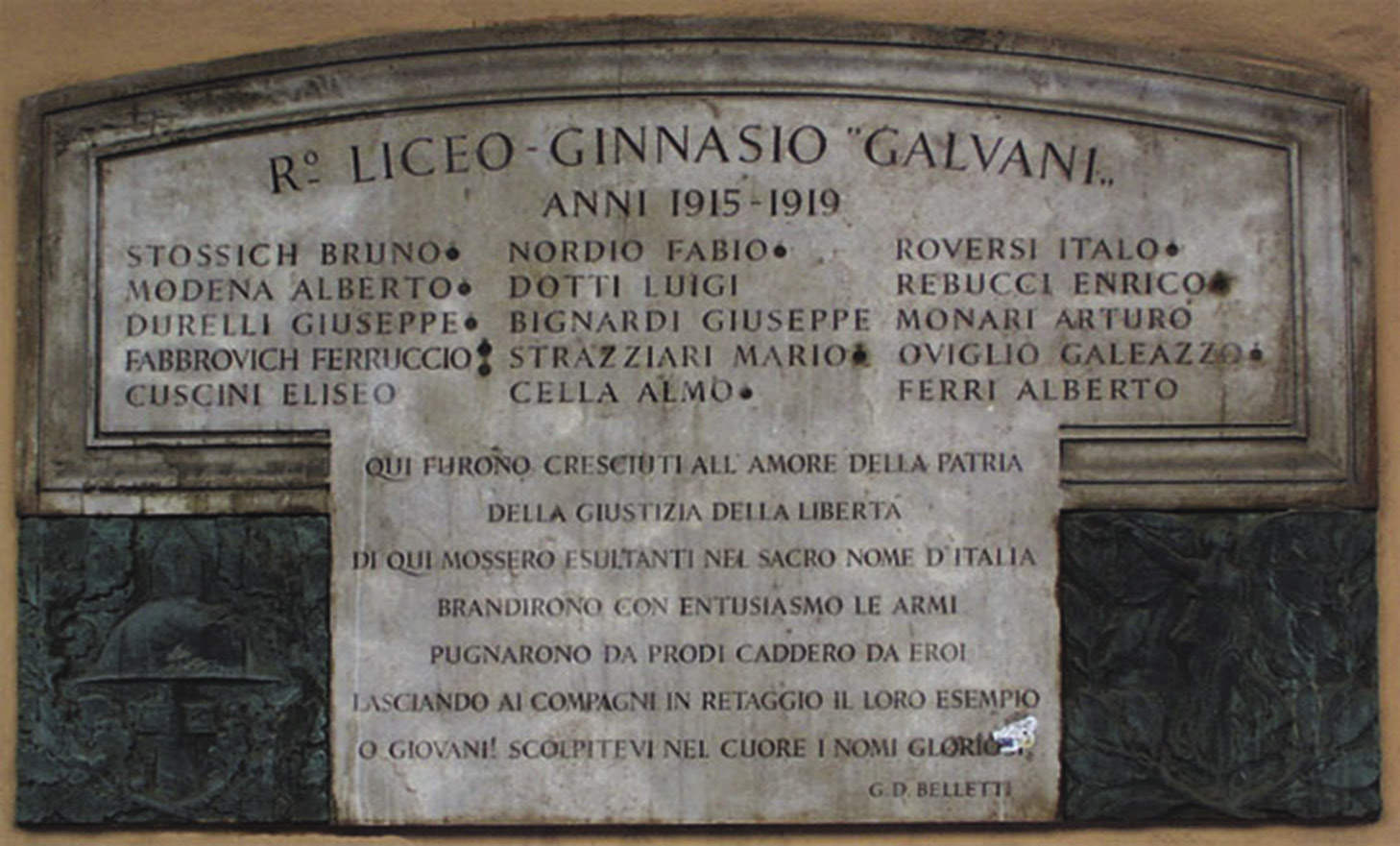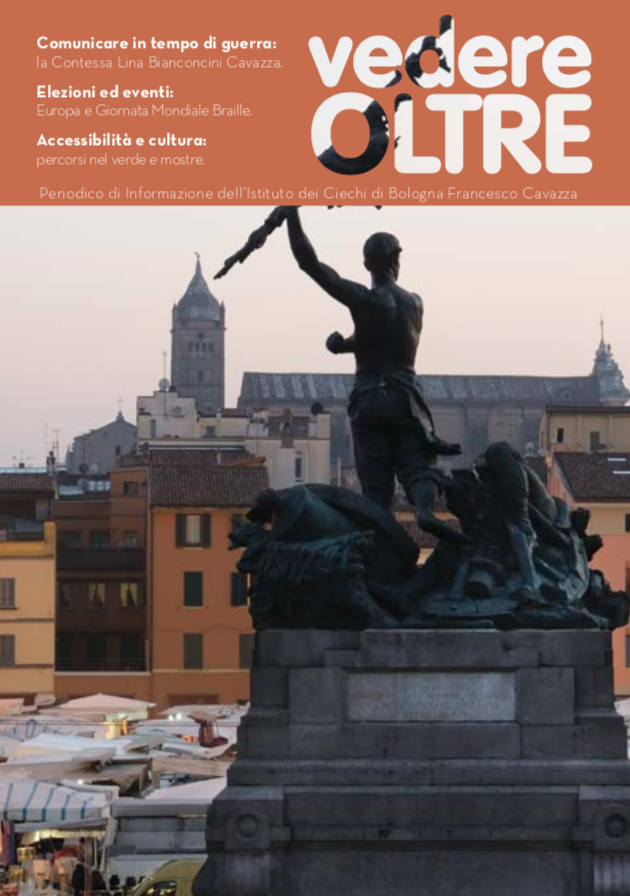 The Galvani school is over one hundred and fifty years old and one of the institutions of Bologna. Rooted in the urban fabric, it has, through the centuries, hosted famous people in its classrooms and always served the community even during the years of conflict. When it became clear that Italy would enter the war, the Galvani school held an interventionist position. Strong with its fifty years of presence in the city, the school was then attended by 523 students. In its corridors, where the patriotic sons of the bourgeoisie gathered, the education provided was based on the values of national unity. Principal Gian Domenico Belletti, a proud Piedmontese, encouraged his boys to enlist, so much so that his school was the first to have a battalion of young volunteers. In addition, the Institute sheltered a patrol of Trieste and Gorizia students, irredentists waiting to leave for the front. Those were years of confusion, strikes and unrest. Because of the war, lessons were often suspended and the Galvani students together with those of the Aldini Valeriani Institute met together on a regular basis preventing teachers from carrying out their duties. Those were years where even the Galvani, one of the pillars of the city's education, was involved in strikes, scuffles and incidents that worried the teaching body given the young age of the students. They were years in which the energy of youth swept everything away, like a sudden wind, entering with strength the corridors of a school that had always been known as stable and solid. So much so that teachers, the headmaster and police were often unable to maintain the order.
The Galvani school is over one hundred and fifty years old and one of the institutions of Bologna. Rooted in the urban fabric, it has, through the centuries, hosted famous people in its classrooms and always served the community even during the years of conflict. When it became clear that Italy would enter the war, the Galvani school held an interventionist position. Strong with its fifty years of presence in the city, the school was then attended by 523 students. In its corridors, where the patriotic sons of the bourgeoisie gathered, the education provided was based on the values of national unity. Principal Gian Domenico Belletti, a proud Piedmontese, encouraged his boys to enlist, so much so that his school was the first to have a battalion of young volunteers. In addition, the Institute sheltered a patrol of Trieste and Gorizia students, irredentists waiting to leave for the front. Those were years of confusion, strikes and unrest. Because of the war, lessons were often suspended and the Galvani students together with those of the Aldini Valeriani Institute met together on a regular basis preventing teachers from carrying out their duties. Those were years where even the Galvani, one of the pillars of the city's education, was involved in strikes, scuffles and incidents that worried the teaching body given the young age of the students. They were years in which the energy of youth swept everything away, like a sudden wind, entering with strength the corridors of a school that had always been known as stable and solid. So much so that teachers, the headmaster and police were often unable to maintain the order.
 Many boys went from school to the trenches of the Italian-Austrian front, convinced that they had more important tasks to perform there than those in school, perhaps in search of an experience capable of making them grow and become adults. When the war ended, the Galvani school counted thirty deaths, honoured with a plaque placed in 1919 next to the entrance door and bearing the names of the fifteen younger soldiers. These young boys sacrificed their lives, and in Galvani there are still documents, letters, photographs from them. Boys like those who cross the school threshold every morning, fallen in pursuit of an ideal so strong as to obscure dreams, hopes and desires of a youth lost in the cruelty of war.
Many boys went from school to the trenches of the Italian-Austrian front, convinced that they had more important tasks to perform there than those in school, perhaps in search of an experience capable of making them grow and become adults. When the war ended, the Galvani school counted thirty deaths, honoured with a plaque placed in 1919 next to the entrance door and bearing the names of the fifteen younger soldiers. These young boys sacrificed their lives, and in Galvani there are still documents, letters, photographs from them. Boys like those who cross the school threshold every morning, fallen in pursuit of an ideal so strong as to obscure dreams, hopes and desires of a youth lost in the cruelty of war.





.png)